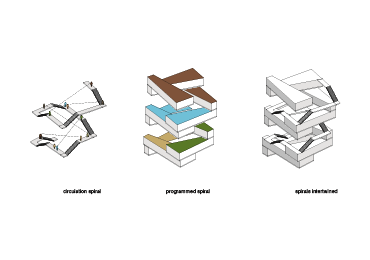morePlatz
architecture / urbanism / art / office / publications / contact deutsch
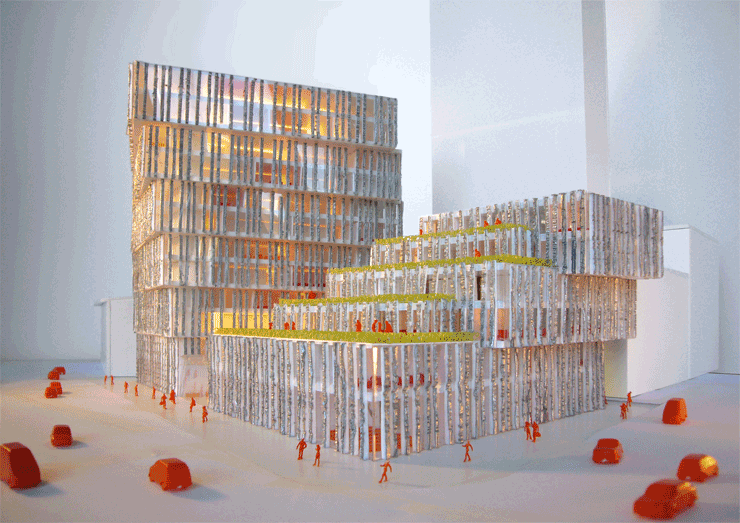
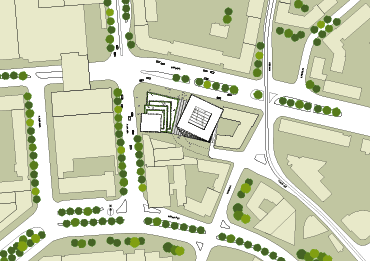 |
Concept
Artistic expressions have currently reached a high level of individuality. The act of ‘learning art’ is mainly linked to the process of getting to know yourself. Discovering creative potential relates to the ability of maximizing your personal perception. The design of the new Estonian Art Academy is conceived as a voided tower. The faculties are arranged along a single loaded hallway opening up to a large communal space. Its conical shape receives top-light to the very centre of the academy. |
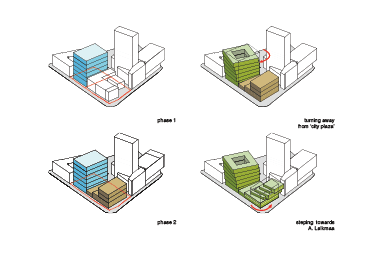 |
|
|
Program
The program is stacked in two distinct volumes, according to function and building phasing. The tower comprises the most active program of the school - all the faculty rooms, the classrooms and studios. The smaller volume contains the more quiet and secluded functions - the library, administration rooms and dean’s offices. |
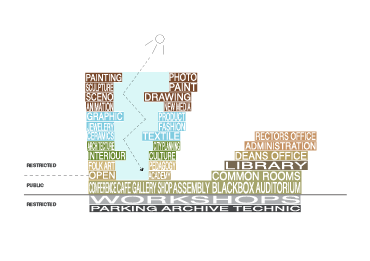 |
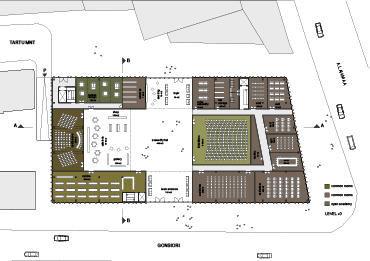 |
The plinth of the building occupies the entire site, organising most of the public functions and publicly accessible rooms around the assembly hall. From there visitors get to the shop, cafe, black box, exhibitions and the library. Students access the studios, auditoria, workshops and institutional rooms of the university. The central hall acts as the mediator between the two main building parts and provides at the same time the split between the building phases and a public shortcut from Gonsiori to Tartu road. |
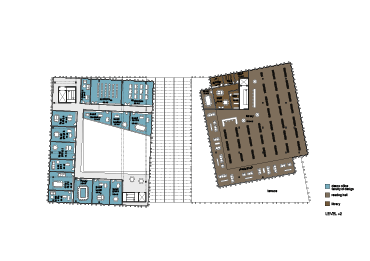
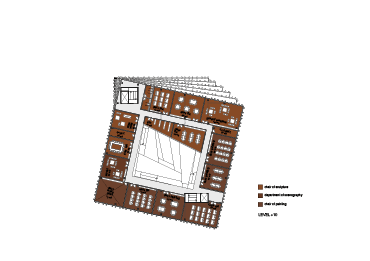
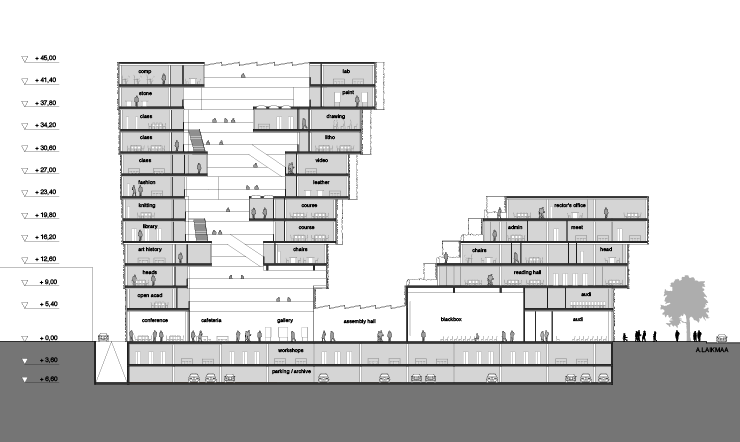
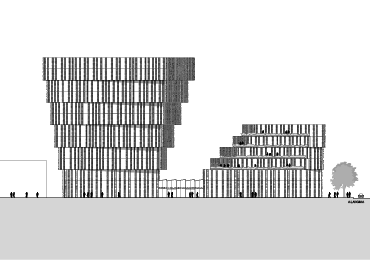 |
Facade
The skin of the building is made of ceiling-high glass elements and aluminium facade panels alternating in an irregular rhythm due to variation in width of the glazed parts. The sides of the panels are matt in order to dim light reflections to the inside. The frontal surfaces of the panels are patterned with deep grooves to provide a vivid relief with multifaceted reflections to the exterior. It is a rough yet bright skin, shining under a different angle to emphasize the shifting and rotation of the volumes. |
|
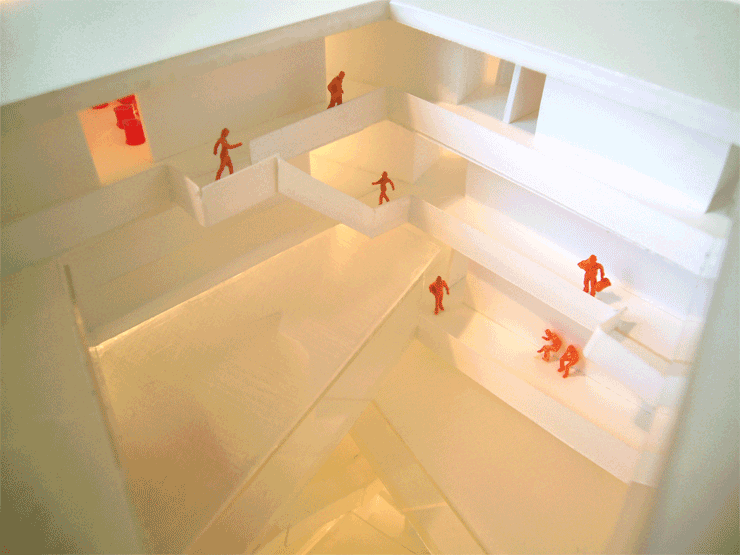
|
Interiour
The rotation of the floors around the empty middle creates a diaphragm shaped void like the shutter of a camera or the iris of an eye. A set of open stairs allows for a second route from bottom to top, providing many shortcuts and connections throughout the teaching and working space of the academy. The void is given final shape through terraces and exhibition spaces along this route, thus becoming the most populated and most densely used space of the school. |
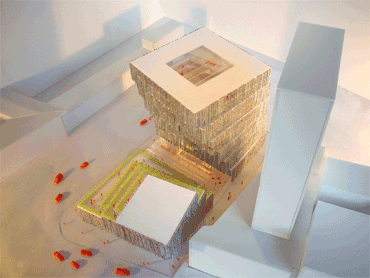 |
